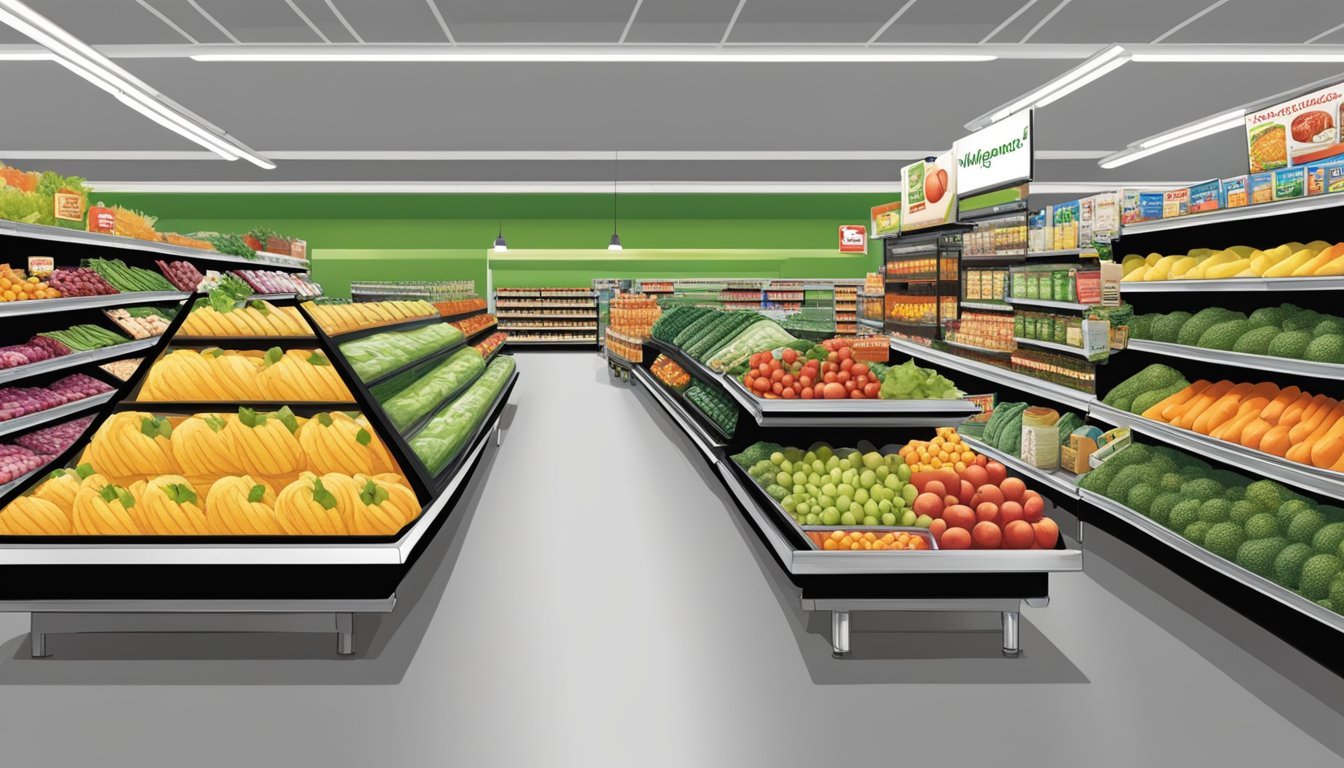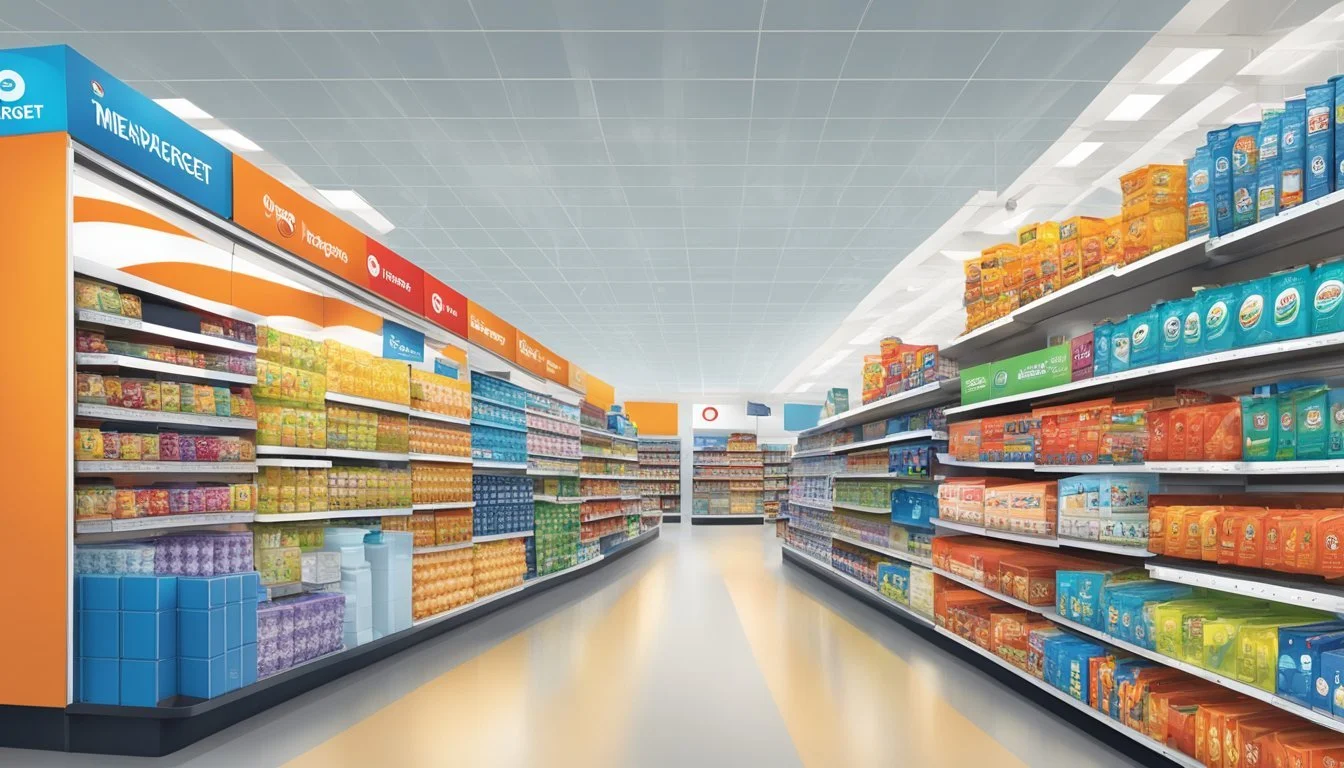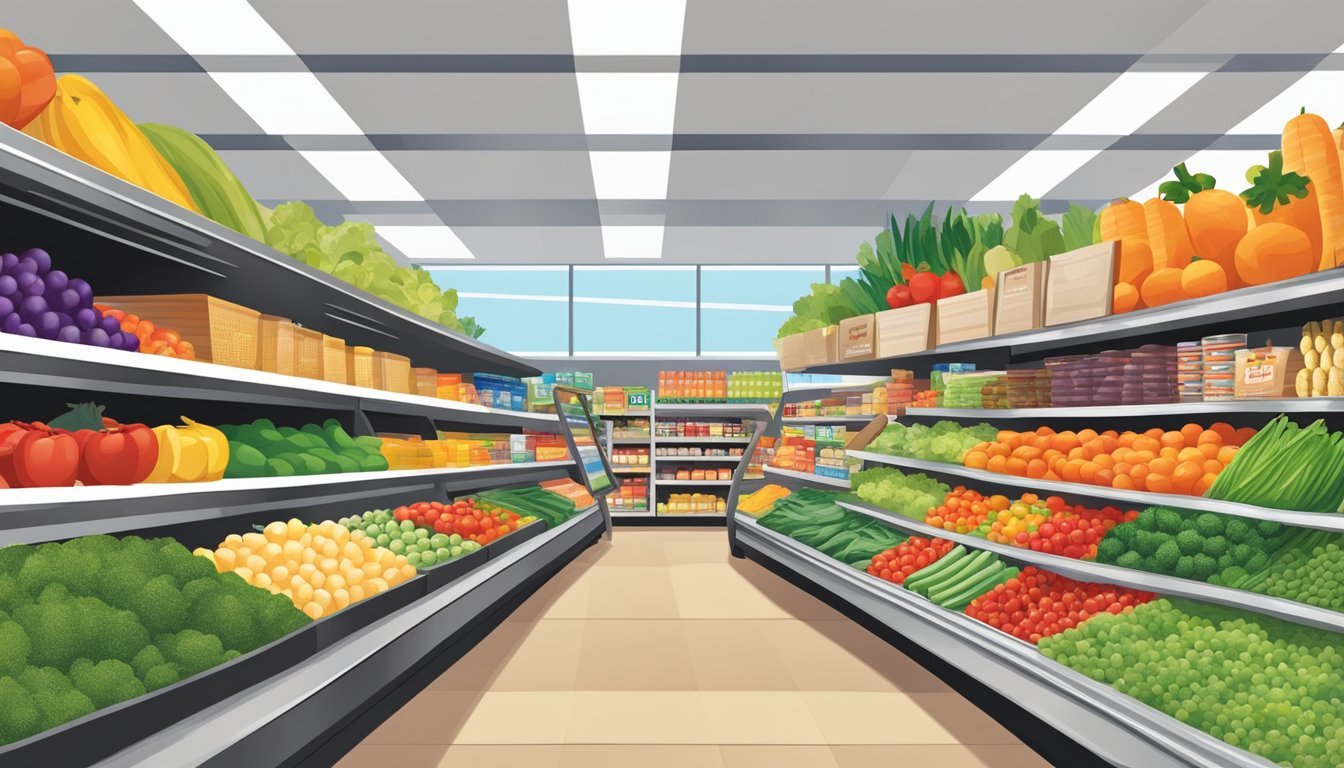Target vs Meijer
A Comprehensive Comparison of Price, Quality, and Selection
When it comes to grocery shopping, consumers often seek the best value for their money. Target and Meijer are two popular retail chains that offer a wide range of products, including groceries. Both stores have their strengths and loyal customer bases, but which one truly offers the better shopping experience?
Based on price comparisons, Meijer tends to have slightly lower overall grocery prices than Target. A study comparing 34 common grocery items found that Meijer's total came to $82.37, while Target's total was $89.56 - a difference of about 8%. However, it's worth noting that Target offers a 5% discount for Red Card holders, which can narrow the price gap between the two stores.
While price is an important factor, it's not the only consideration when choosing between Target and Meijer. Both stores offer a diverse selection of products beyond just groceries, including clothing, electronics, and home goods. Meijer is known for its extensive variety, positioning itself as a one-stop shop for all consumer needs. Target, on the other hand, has cultivated a reputation for stylish and affordable home decor and clothing lines that appeal to many shoppers.
Brief History and Overview
Target and Meijer are two prominent retail chains that have become household names in the United States. Both offer grocery and general merchandise, competing for market share in the supermarket industry.
Target Corporation
Target Corporation began as Goodfellow Dry Goods in 1902 in Minneapolis, Minnesota. The company rebranded to Target in 1962, opening its first discount store in Roseville, Minnesota.
Target quickly expanded across the country, becoming known for its trendy yet affordable merchandise. In 1975, Target became the top revenue-producing division of its parent company.
The retailer introduced its first SuperTarget stores in 1995, featuring full grocery sections. Today, Target operates over 1,800 stores across the United States, with most locations offering fresh produce and pantry staples.
Meijer Inc.
Meijer Inc. was founded in 1934 by Hendrik Meijer in Greenville, Michigan. The company started as a small grocery store during the Great Depression.
In 1962, Meijer pioneered the supercenter concept, opening its first "Thrifty Acres" store. This innovative format combined general merchandise with groceries under one roof.
Meijer has remained a family-owned business, expanding primarily in the Midwest. The company now operates over 240 supercenters across six states.
Meijer stores are known for their wide selection of products, competitive prices, and 24-hour operations. The retailer has also embraced technology, offering digital coupons and online shopping options.
Store Locations and Regional Presence
Target and Meijer have distinct geographical footprints across the United States. Their store locations reflect different expansion strategies and regional focuses.
Target's Geographic Reach
Target operates over 1,800 stores across all 50 U.S. states and the District of Columbia. The retailer has a strong presence in major urban and suburban areas nationwide. Target's expansion strategy focuses on high-traffic locations in populated regions.
In the Midwest, Target maintains a significant presence in cities like Chicago and throughout states such as Ohio and Wisconsin. The company also has numerous stores in coastal areas and the Sun Belt.
Target's reach extends beyond traditional retail locations. The company has opened smaller-format stores in college towns and dense urban areas to cater to specific local needs.
Meijer's Regional Stores
Meijer operates over 250 supercenters, primarily concentrated in the Midwest. The retailer's core market includes Michigan, Ohio, Indiana, Illinois, Kentucky, and Wisconsin.
Meijer's headquarters are in Grand Rapids, Michigan, where the company was founded. This regional focus allows Meijer to tailor its offerings to Midwestern preferences and tastes.
In recent years, Meijer has expanded into northern Kentucky and the Chicago area. The company's growth strategy targets suburban and rural communities, often becoming a one-stop shopping destination in these areas.
Meijer's store format typically includes large supercenters that combine groceries with general merchandise, appealing to customers seeking convenience and variety in a single location.
Pricing Comparison
Target and Meijer compete closely on grocery prices, with each offering distinct advantages for shoppers. Their pricing strategies impact everyday items, special discounts, and long-term savings potential.
Everyday Prices at Target vs. Meijer
Target and Meijer both strive to offer competitive prices on everyday groceries. Meijer tends to have slightly lower prices overall, with studies showing their prices about 11% below average compared to other surveyed stores.
Target's prices are generally higher than Meijer's, but still competitive in the grocery market. For a typical shopping trip, customers might find Meijer's total bill 8% cheaper than Target's.
However, Target offers additional savings through its RedCard program, which can reduce prices by an extra 5%.
Discounts and Savings Opportunities
Both retailers provide various ways for customers to save money on groceries. Meijer offers weekly sales, digital coupons, and mPerks rewards program.
Target counters with its own weekly deals, Circle rewards program, and manufacturer coupons. The Target RedCard provides an additional 5% discount on most purchases.
Both stores tend to offer similar coupons on many items, making it worthwhile for shoppers to compare deals before deciding where to shop. Digital coupons and rewards programs at both stores can lead to significant savings for regular customers.
Comparative Analysis of $250 Per Week Shopping
For families spending $250 weekly on groceries, the price differences between Target and Meijer can result in substantial annual savings. Shopping at Meijer could save a family approximately $1,400 to $1,700 per year compared to average grocery prices.
Target's savings potential is somewhat lower but still significant. The 5% RedCard discount can add up quickly for frequent shoppers.
To maximize savings, customers should consider:
Utilizing store loyalty programs
Combining sales with coupons
Taking advantage of price matching policies
Comparing prices on staple items
Strategic shopping at either store can lead to noticeable reductions in grocery expenses over time.
Product Selection and Availability
Target and Meijer offer diverse product selections to meet shoppers' needs. Each store has its strengths in certain categories, influencing customers' preferences based on their shopping priorities.
Brand and Product Variety
Target carries a mix of national brands and its own private labels across various departments. Their Good & Gather line features over 2,000 food and beverage items. Meijer boasts an extensive selection, often surpassing Target in total product count.
Meijer stocks over 220,000 items, including groceries, clothing, and home goods. Their larger stores typically offer more variety than Target, especially in food categories.
Target excels in trendy home decor and affordable fashion lines. Meijer provides a wider range of everyday essentials and regional products.
Quality of Fresh Produce
Meijer's produce department resembles a farmers market, with a wide array of fruits and vegetables. They prioritize freshness and often source from local farms when possible.
Target has improved its fresh produce offerings in recent years. However, their selection is generally smaller than Meijer's.
Both stores maintain quality standards, but Meijer's larger produce section often provides more choices and specialty items.
Organic and Specialty Offerings
Meijer features an expansive organic selection, particularly in the produce department. They offer a variety of organic fruits, vegetables, and pantry staples.
Target's Good & Gather Organic line covers many common grocery items. Their selection is growing but may be more limited than Meijer's in some categories.
For specialty items, Meijer often has the edge due to its larger store format. They typically stock more international foods, dietary-specific products, and gourmet options.
Target focuses on curated specialty items, particularly in snacks and beverages. Their selection may appeal to those seeking unique or trending products.
Customer Shopping Experience
Target and Meijer offer distinct shopping experiences for consumers, from their in-store atmospheres to online platforms and customer service approaches. Both retailers strive to meet diverse customer needs through various channels and services.
In-Store Experience
Target stores feature a clean, modern aesthetic with wide aisles and well-organized departments. The retailer emphasizes style and design in its product displays, particularly in clothing and home goods sections. Target's grocery aisles are typically smaller than Meijer's but still offer a good selection of essentials.
Meijer stores have a more traditional supermarket layout with expansive grocery departments. Their larger footprint allows for a wider variety of products, including fresh produce, meats, and bakery items. Meijer's non-grocery sections are extensive, offering everything from clothing to electronics and automotive supplies.
Both chains maintain well-stocked shelves and aim for a pleasant shopping environment. Meijer stores are often open 24 hours, providing added convenience for shoppers.
Online Shopping and Grocery Delivery
Target has invested heavily in its digital presence, offering a user-friendly website and mobile app for online shopping. The retailer provides same-day delivery through Shipt and in-store pickup options. Target's Drive Up service allows customers to have orders brought directly to their cars.
Meijer also offers robust online shopping capabilities, including home delivery and curbside pickup services. Their mPerks digital coupon program integrates seamlessly with online orders, helping customers save money on their purchases.
Both retailers have expanded their grocery delivery options in recent years, partnering with third-party services to ensure timely and efficient delivery of fresh and frozen items.
Customer Service and Satisfaction
Target is known for its focus on customer experience, with well-trained staff and a reputation for helpful service. The company's REDcard program offers additional perks and discounts to loyal shoppers.
Meijer prides itself on community involvement and personalized service. The retailer's larger stores often feature specialized departments with knowledgeable staff, such as pharmacists and butchers.
Customer satisfaction ratings for both chains are generally positive. A recent survey found that Target ranked highly in enjoyable in-store experiences, while Meijer received praise for its product variety and competitive pricing.
Both retailers have implemented customer feedback systems and actively respond to consumer concerns, aiming to continuously improve their shopping experiences.
Specialty Departments and Services
Target and Meijer offer diverse specialty departments to enhance the shopping experience. Both stores provide deli counters, bakeries, and pharmacies, but with distinct approaches to product selection and customer service.
Delicatessen and Prepared Foods
Target's deli section focuses on quick grab-and-go options. They offer pre-packaged meats, cheeses, and salads. Their prepared food selection includes rotisserie chickens and sandwiches.
Meijer's deli is more extensive. It features a full-service counter with sliced meats and cheeses. Meijer also provides a wider array of prepared foods, including hot meals, salad bars, and made-to-order sandwiches.
Both stores offer catering services for events and parties. Meijer's selection tends to be larger and more varied, catering to different dietary needs and preferences.
Bakery and Baked Goods
Target's bakery emphasizes convenience with pre-packaged items. They stock basic bread varieties, muffins, and cookies. Special occasion cakes are available for order.
Meijer's bakery is more robust. It offers freshly baked breads, pastries, and custom cakes. Artisanal options and a wider variety of specialty items are typically available.
Both stores provide allergen-friendly and gluten-free options. Meijer often has a larger selection of these specialty items. Their bakeries also frequently feature seasonal and holiday-themed treats.
Pharmacy and Wellness Products
Target and Meijer both operate full-service pharmacies. They offer prescription filling, immunizations, and basic health screenings. Generic medication programs are available at both stores.
Target's pharmacy is often integrated with their CVS partnership. This can provide additional services and a wider range of over-the-counter medications.
Meijer pharmacies typically offer extended hours, including 24-hour service at some locations. They also provide specialized services like medication therapy management and compounding at select stores.
Both retailers stock a variety of wellness products. These include vitamins, supplements, and personal care items. Meijer often has a larger selection of natural and organic wellness products.
Store Policies and Community Impact
Target and Meijer have distinct approaches to corporate responsibility and local engagement. Their policies and practices shape their environmental footprint, social impact, and contributions to local economies.
Environmental and Social Policies
Target has committed to achieving net zero greenhouse gas emissions by 2040. The company aims to source 100% renewable electricity for its operations by 2030. Target also focuses on sustainable product design and responsible sourcing.
Meijer emphasizes waste reduction and energy efficiency. The retailer has implemented a food waste reduction program and uses energy-efficient lighting and refrigeration systems in its stores. Meijer also partners with local food banks to donate unsold food items.
Both companies have diversity and inclusion initiatives. Target has set goals to increase representation of Black team members across the company. Meijer supports supplier diversity programs and offers inclusive product lines.
Local Economic Contributions
Target creates jobs in local communities through its stores and distribution centers. The company offers competitive wages and benefits to employees. Target also supports local education initiatives through its school supply donation programs.
Meijer has a strong focus on supporting local farmers and producers. The retailer sources a significant portion of its produce from local growers during peak seasons. This practice helps sustain local agricultural economies.
Both companies contribute to local charities and community organizations. Target's community grant program allows stores to support local nonprofits. Meijer's Simply Give program has raised millions of dollars for local food pantries.
Loyalty Programs and Marketing Strategies
Target and Meijer both employ loyalty programs and marketing strategies to attract and retain customers. Their approaches differ in terms of membership benefits and advertising campaigns.
Membership Benefits
Target's loyalty program, Target Circle, offers 1% cashback on purchases and personalized deals. Members receive a birthday gift and can vote on Target's charitable giving. The program is free to join and integrates with the Target RedCard for additional savings.
Meijer's mPerks program provides digital coupons and personalized rewards. Members earn points on purchases, which can be redeemed for money off future shopping trips. Meijer also offers a credit card that provides additional benefits when used with mPerks.
Both programs allow customers to clip digital coupons and access exclusive discounts. Target Circle tends to focus more on percentage-off deals, while mPerks emphasizes point accumulation and redemption.
Advertising Campaigns
Target's marketing often features its signature bullseye logo and red color scheme. Their campaigns highlight trendy, affordable products and collaborations with popular designers. Target frequently uses social media influencers to promote seasonal collections and exclusive lines.
Meijer's advertising emphasizes its Midwestern roots and commitment to fresh, local products. Their campaigns often feature real customers and employees. Meijer uses a mix of traditional media and digital platforms to reach customers.
Both retailers leverage email marketing and mobile apps to deliver personalized offers. Target's campaigns tend to have a more stylized, fashion-forward aesthetic, while Meijer's ads often focus on family-oriented messaging and value pricing.
Comparison with Other Retailers
Target and Meijer face competition from various retailers in the grocery market, ranging from national chains to specialty stores and regional players. Each competitor brings unique strengths and challenges to the market.
Walmart and Supermarket Giants
Walmart stands as a formidable competitor to both Target and Meijer, offering consistently low prices across a wide range of products. Walmart's extensive network of stores and efficient supply chain often allow it to undercut competitors on pricing.
Kroger, another major player, competes strongly in the grocery sector with its focus on fresh produce and private label brands. Safeway and Albertsons, now part of the same company, provide strong regional competition in many markets.
Costco and other warehouse clubs offer bulk buying options that can be attractive for certain shoppers, though their membership model differs from the open-door policy of Target and Meijer.
Specialty Food Sellers and Organic Markets
Whole Foods, now owned by Amazon, targets health-conscious consumers with its focus on organic and natural products. This specialty approach contrasts with the more general offerings of Target and Meijer.
Sprouts Farmers Market similarly caters to health-focused shoppers, emphasizing fresh produce and natural foods. These specialty retailers often command higher prices but attract loyal customer bases.
Trader Joe's, known for its unique product selection and friendly atmosphere, competes in a different niche. Its smaller store format and curated product range set it apart from the broader selections at Target and Meijer.
Regional Chains and Discount Stores
Aldi has been expanding rapidly, challenging established retailers with its no-frills approach and low prices. Its limited selection and focus on private labels allow for aggressive pricing.
Regional chains like Publix in the Southeast, Wegmans in the Northeast, and Hy-Vee in the Midwest provide strong local competition. These chains often build customer loyalty through superior service and community engagement.
Discount chains like Food 4 Less and discount formats of major chains (e.g., Kroger's Ruler Foods) compete primarily on price, appealing to budget-conscious shoppers. Their bare-bones approach contrasts with the more upscale feel of Target and the broad selection of Meijer.
Final Thoughts and Recommendations
Target and Meijer both offer unique strengths for grocery shoppers. Target excels in providing trendy, design-focused store brands and a curated selection of products. Their stores tend to have a modern, upscale feel.
Meijer shines with its expansive product range and competitive pricing. Their larger stores typically stock a wider variety of items, including fresh produce and meats. Meijer's pricing often rivals or beats other major chains.
For health-conscious shoppers, both stores offer organic and natural options. Target's Good & Gather line includes many healthier choices, while Meijer's True Goodness brand provides similar alternatives.
Families may find Meijer more suitable due to its broader selection and generally lower prices on everyday essentials. The one-stop-shop nature of Meijer can be convenient for busy households.
The best choice ultimately depends on individual priorities. Those seeking a stylish shopping experience with curated options might prefer Target. Shoppers prioritizing variety and value may lean towards Meijer.
Consider trying both stores to determine which best meets your needs. Pay attention to prices, product quality, and store atmosphere to make an informed decision.









